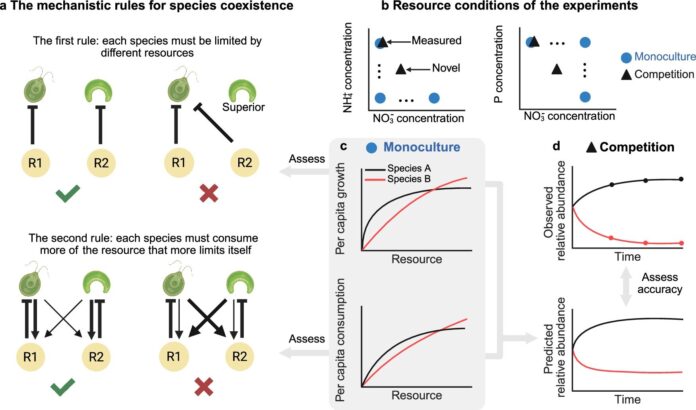Biological communities are in constant flux. Species compositions change, sometimes dramatically, as ecosystems respond to environmental pressures. Predicting these shifts is critical for understanding ecological dynamics, from natural systems like ocean plankton to engineered environments like the human gut microbiome or biotechnological processes. Now, a new mechanistic model, rigorously tested with freshwater algae, demonstrates a remarkable ability to forecast how biological communities will evolve.
The Power of Mechanistic Modeling
Traditional ecological models often rely on statistical correlations, which can be unreliable. Mechanistic models, however, are built on fundamental biological principles—how species interact, compete for resources, and ultimately coexist or disappear. This approach offers the potential for more accurate predictions. Researchers at the University of Konstanz have now validated this promise with an expanded consumer-resource model, publishing their findings in Nature Communications.
The team refined existing rules governing species coexistence, confirming their model’s high predictive capacity. The implications are broad: from predicting the future of natural ecosystems to influencing the development of engineered biological communities.
Modern Methods Enable Rigorous Testing
The theoretical groundwork for this research dates back to the 1960s. So why has a comprehensive experimental validation only now become possible? The answer lies in the advent of high-throughput laboratory automation.
“Previous attempts showed some success, but a truly comprehensive study required an enormous number of experiments,” explains Lutz Becks, professor of limnology and lead author of the study. “Only with modern equipment could we complete this within a reasonable timeframe.”
The initial phase involved determining the nutrient requirements of different algal species, requiring 864 growth experiments. Each monoculture was prepared by a robotic system, and algal counts were automated using a high-throughput microscope. In experiments involving mixed communities, artificial intelligence assisted in identifying species.
Model Validation: Prediction Meets Reality
The data from these experiments were used to refine the existing model, incorporating resource utilization as a key parameter. The researchers then conducted 960 additional experiments, combining algal species under various nutrient conditions. The model’s predictions were compared to the observed community development, and the results were striking: the mechanistic model accurately predicted the composition of the different communities.
Refining Ecological Rules
The researchers also used their model to test two ecological rules formulated by biologist David Tilman. These rules state that species competing for limited resources either coexist or displace each other, depending on whether they are limited by different resources and whether each species consumes more of the resource that limits its growth.
The simulations revealed that only the first rule—that species must be limited by different resources—is universally valid. The second rule—that species consume more of the resource limiting their growth—only applies when species compete for replaceable resources, not essential ones.
“We must always distinguish between these two classes of nutrients when applying the rule,” explains Zhijie Zhang, the study’s first author.
Implications for Climate Protection
The approach developed in this study will now be applied to a project focused on CO₂ sequestration through phytoplankton. This project, supported by the Vector Stiftung, aims to leverage biological communities to mitigate climate change.
The model’s ability to accurately predict ecosystem shifts offers a powerful tool for managing and manipulating biological systems, from natural environments to engineered biotechnological processes. This research marks a significant step toward a more predictive and controllable understanding of ecological dynamics














































